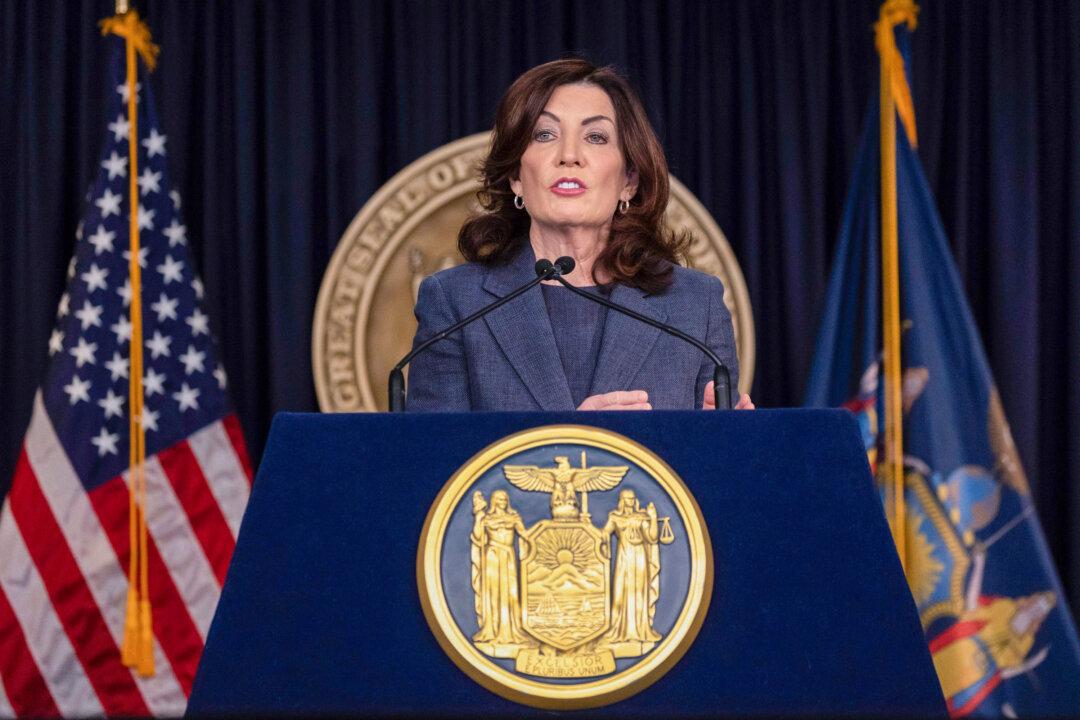That’s the view of an economist, Gary Wolfram, who took part in past clashes over the debt limit as chief of staff to then-Rep. Nick Smith (R-Mich.), who served in Congress from 1993 to 2005, during the administrations of Presidents Bill Clinton and George W. Bush, respectively.

Exceeding Limits
At the end of last week, Yellen sounded an alarm over the likelihood that government spending would reach the statutory debt limit of $31.4 trillion as soon as Jan. 19. Even with the “extraordinary measures” that the Treasury Department is expected to take as the limit is surpassed, a full-blown default is likely by June 2023, Yellen warned in a letter to McCarthy and other lawmakers.Yellen’s position is that McCarthy and his GOP colleagues should give their okay to raising the debt limit in order to avoid a negative impact on the U.S. credit rating and the attendant reputational harm.
For their part, McCarthy and colleagues continue to push for bipartisan talks.
To Wolfram, a professor of economics at Hillsdale College in Michigan, the impasse that the two sides have reached is reminiscent of feuds and stalemates over the national debt on which he advised Smith while serving as the lawmaker’s chief of staff in 1995 and 1996. The problem of America’s ever-escalating debt, and the total lack of consensus over what to do about it, are nothing new, he said.
“We’ve raised the debt ceiling many times, and this is not the first time there’s been an effort to obtain concessions. I took a leave of absence from Hillsdale to be a congressional chief of staff in 1995-1996, and there was a debate back then about raising the debt limit and trying to get President Clinton to agree to a balanced budget. There were some years during the Clinton administration when we actually achieved that,” Wolfram told The Epoch Times.
“I do think that one of the useful aspects of this situation is to bring to the attention of the people of the United States that there is a problem here,” Wolfram continued.
If there is a silver lining to the current impasse, it may encourage people to become a bit more familiar with the economic factors that make government spending so unsustainable and keep pushing lawmakers and the executive branch to the brink of conflict, he suggested.

Mandated Spending
The omnibus Consolidated Appropriations Act of 2023, which President Biden signed into law on Dec. 29 and which funnels $1.7 trillion to various spending programs in 2023, is a good example of the kind of spending package that is common nowadays, with heavy allocations for both discretionary programs and ostensibly essential ones such as defense. The bill sets aside $772.5 billion for the former and $858 billion for defense.What not everyone realizes is that, even with a paring down or elimination of many of the discretionary items, the government still would not have even begun to dig its way out of its fiscal hole, Wolfram explained.
“If you eliminated all the non-defense, discretionary spending, if that omnibus appropriations bill only had defense spending and paid interest on the national debt, you’d still run a deficit of about $1.4 trillion,” Wolfram calculated.
Some people tend not to give as much thought to the share of the federal pie consumed by these programs, but it is impossible to undertake a clear and comprehensive analysis of federal profligacy without considering them. Here is where discussions of how to respond to the looming debt crisis so often come up short, the economist argues.
“It’s not just the annual appropriations bill we have to deal with. We have to deal with the mandatory spending that has already been passed,” Wolfram said.
The Big Picture
Addressing these expenditures would, of course, entail a larger discussion about the role of government and what it is constitutionally authorized to do. At the present juncture, Wolfram sees it as unlikely that many lawmakers will have much of a taste for addressing more than the discretionary aspects of federal largesse.“On the House and Senate floors, it will probably be limited to, ‘We need to do something about the deficit, and all we can deal with at this point are the discretionary programs.’ They’re likely to make some gains in addressing that spending problem. And, in a sense, if you think there’s a program that’s actually reducing people’s incentives to work, then eliminating it may actually have an effect that increases economic growth and reduces people’s dependence on government, and that may be a larger benefit,” Wolfram said.
But it is hard to overstate the political difficulties that would attend any effort to address the deeper, more structural flaws in the fiscal model that keeps teetering on the brink of collapse, concurred Ivan Pongracic, a colleague of Wolfram’s in the economics department at Hillsdale.
“We go through this stuff so often. We are reaching obviously incredible debt levels that are getting to the point where I think more and more people are starting to worry abut how much more can be absorbed, especially with the rising interest rates,” Pongracic told The Epoch Times.
“As the overall level of debt keeps increasing, as well as the interest rates, it’s starting to eat up a larger amount of the overall budget. It’s as if we pay off one credit card by borrowing with another credit card, and that never ends well,” he added.
Yet even in the face of the escalating instability, some people maintain faith in the ability of the government to operate on a heavily credit-based system, Pongracic said.
Dealing With the ‘Real Problem’
Pongracic agreed with Wolfram that the unsustainability of the current model derives largely from the mammoth spending mandated for Medicare and Social Security.“If you don’t solve those two, that is what’s going to bring about the eventual bankruptcy of the U.S. federal government, so discretionary spending is a small component of the entire package, it’s really just messing around on the margins and not dealing with the real problem.”
That problem, he argued, is the extreme unpopularity, politically speaking, of even proposing changes to Social Security and Medicare benefits.
“On one level, I can’t really blame politicians for not wanting to go there. Back in the 1980s, there used to be an expression, that this was the ‘third rail’—it kills any politician who brings it up. That still seems to be very much the case,” Pongracic said.
The unfeasibility of the existing model is likely to get significantly worse over the next 30 years, he predicted. Baby boomers and members of Generation X are highly accustomed to a certain standard of living, and the political consequences for any candidate or elected official who dares to rock the boat will not be favorable.
“Social Security and Medicare increases are designed to allow that standard of living to be retained as they retire, which is a noble goal, but we would be relying entirely on transfers from millennials and Generation Z, and they may not be able to supply enough funds,” Pongracic said.
“The benefits are going to be considerably above their contributions in their lifetimes, and that’s what makes the whole system unsustainable,” he added.
The Epoch Times has reached out to the White House and McCarthy’s office for comment.





